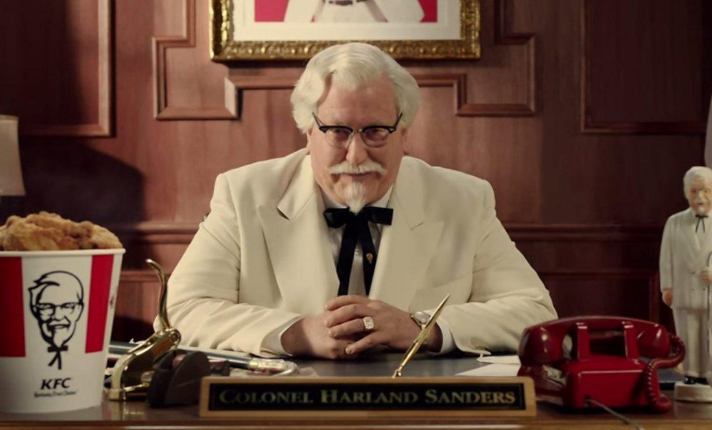Today’s feature is re-purposed from the LinkedIn blog of Michael Wolfe, CEO of Bottom-Line Analytics and Global Analytics Partners and expert on marketing ROI, advertising effectiveness measurement and big data analytics. Michael teams up with ABX on market mix modeling and other projects.
Does the “Trademarked” Colonel Sanders Outperform the Real Person?
The history of Yum brand’s KFC is inexorably linked to Colonel Harland Sanders. Over the years, KFC has tended to move away from putting the in-person Colonel Sanders inside of its advertising and marketing communications.

Over more recent years, however, KFC has brought back the personal Colonel Sanders (via an actor) into its advertising creative. We were curious to see how this new strategy was working, so devised a study using 111 KFC ads and ABX’s copy testing process, and divided KFC’s ads into three groups as follows:
- Ads with a person playing Colonel Sanders
- Ads where the trademark image of the real Colonel Sanders appears
- Ads where the Colonel plays no direct or visible role
The table below summarizes ABX Index scores with several top Key Performance Indicators broken out. The ABX Index utilizes KPIs that are predictive in terms of Calls-to-Action. It does not does not utilize the “Like” or “Dislike” measures as part of the Index since they are not predictive, but they are shown separately.

As shown above, there is no difference between the in-person Colonel (acted) and where there is no representation (None). However, using the real Colonel’s trademarked image, without the personal (acted) appearance, shows stronger overall effectiveness.
One major insight here is that the “dislike” for the in-person Colonel Sanders ads was significantly higher than the generic ads (None). Nevertheless, stated “Purchase Intent” was higher in both. It would appear that the in-person (acted) Colonel Sanders is a polarizing figure (there was no major difference on likeability, even though dislike was significantly greater).
The Colonel Sanders ads appear do follow in the footprint of the famous 1960s Mr. Whipple “Don’t Squeeze the Charmin” ads. These ads were generally rated among the most disliked ads of all time. However, it was also said that those ads “sold a lot of Charmin”.(1) While these two instances support our hypotheses about likeability, more research needs to be done and we should all use caution when it comes to generalizing.
The debate about “advertising likeability” continues. In a recent article that I published in the Greenbook Blog, I evaluated sixty-five 2017 Super Bowl ads. While most of the ads were found to be very high on measures of likeability and low on dislike, these same ads generally did not perform that well on measures of “Purchase Intent”. Despite all of this, it seems that many marketers, tend to select ads on the basis of whether they are perceived to be likeable. This is an issue that certainly demands more careful study.
1 Dave Berry, “It’s official: Mr. Whipple, we hate you”, Baltimore Sun, Feb. 9, 1997.
Are you satisfied with how you are measuring advertising effectiveness? Is it resonating through Awareness and Message, and having an impact on Reputation and Action? ABX provides the largest normative database in the industry across all media types. On average you can improve your creative effectiveness by almost 20%.
If you have questions, or would like a quick, informal chat, contact us HERE.
